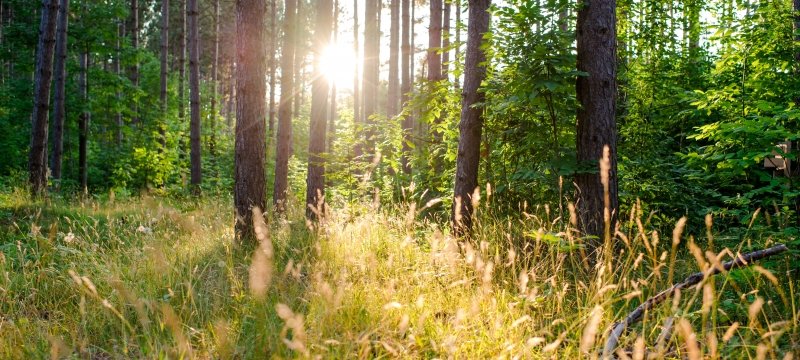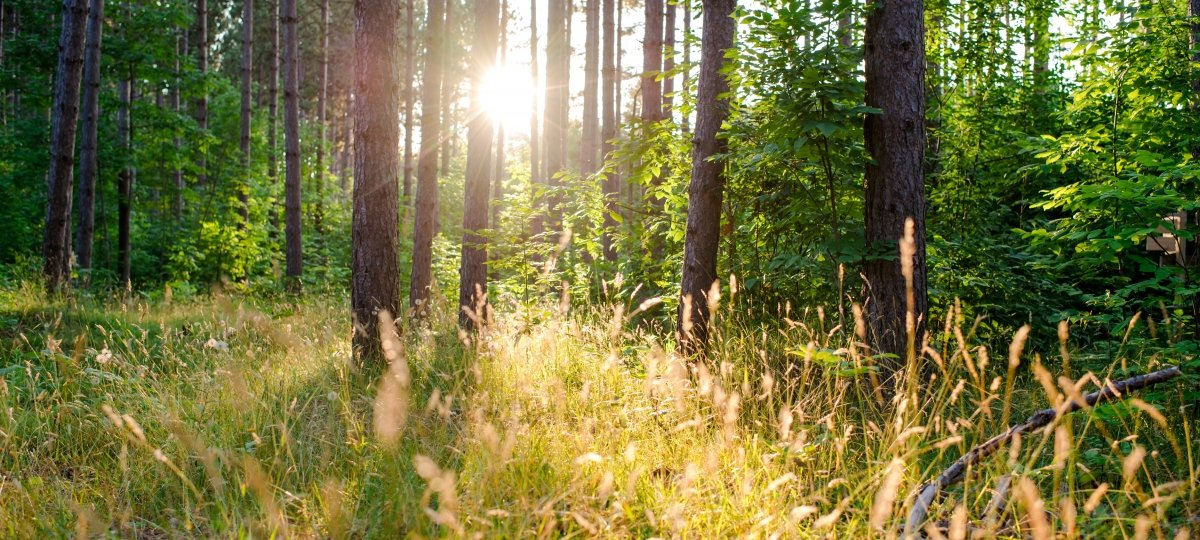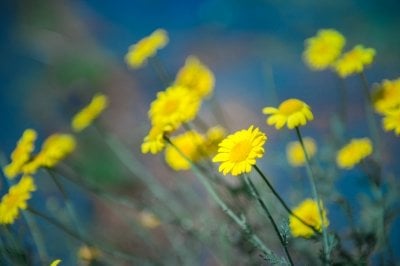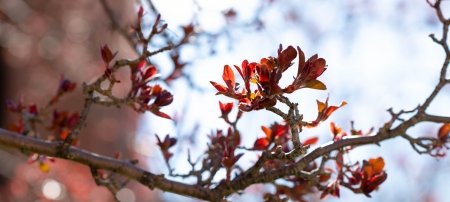Krause, recent Master of Forestry graduate and outreach assistant for the College of Forest Resources and Environmental Science, explores diversity through the language of forests.
I choose to surround myself with forests every day, so when the question, “What does diversity mean to you?” was posed, I took a walk in the northern forests I call my home.
The Art and Unity of Growth
When I step into the woods surrounding my home, I see birch trees collapsing next to cedars that stand tall. I see thimbleberries thriving in the dark understory, while the oak above them begins to die of a disease it was never prepared for. I see a hawk circling an opening in the wintertime waiting for a small mammal to appear above the snow, the contrast of the rodent’s dark little body against the blinding reflection of sun on every flake below.
Caught in the Krausefire
Krause hosts a podcast (available on Spotify) about natural resources and environmental topics, as well as diversity in forestry. They also host guest speakers to explore forestry careers, wildland fire, climate change and more.
Life is like these diverse forests. While some see competition, the plants, animals and trees see opportunity. Growing is a struggle for some, but a worthwhile struggle most times. Even when the end result is a burled, gnarly-looking oak, the squirrels eat its acorns and the wood can be burned to create the brightest of fires. Its shape and strength bring travelers a shelter in the storm.
Many of us recall lessons about “competition” in forests from our ecology and silviculture classes, but I recall learning about harmony, unanimity and solidarity in the forests — and in people.
Growth in the forest and in life is not a competition to me. It is a work of art and unity. Each plant, animal, insect, leaf and human being has a purpose and opportunities. For people, the system is broken in the eyes of many. But in forests, the system, while having flaws, still has one goal that each piece works toward: ecosystem success.
Some species grow tall to protect others. Those protected thrive just as much as those towering above. One day, those above will die, but their impact will resonate for centuries. The sapling that waited 50 years below for the light to finally shine through will forever be affected by the protection the oak gave during winter storms, and it will thrive where the tree before it once stood. This sapling will clench the ground with its roots. It will reach for the light faster and more furiously than ever before. Its roots will intertwine with others’ below and reach untouched soil. These roots break new ground every day.
The Towering Giants Who Came Before Us
Martin Luther King Jr., W.E.B. Du Bois, Rachel Carson, Thurgood Marshall, César Chávez, Jane Addams and Florence Kelley, Upton Sinclair, Charlotte Perkins Gilman, Bayard Rustin, Malcolm X — they are some of the first, tallest and most impressive trees in the forest we call “diversity.” They too began as seeds that became pines, maples, oaks, paper birches, cherries. They grew so tall and strong for so long that they moved the earth until even mountains began to move around them. Their skin was the bark that pests and nails could never go through — but bullets could. Their work allowed the understory to grow and the unnamed and unknown to not merely survive, but thrive. Their protection impacted generations of people.
Kimberlé Crenshaw, Gloria Steinem, Laverne Cox, Alicia Garza, Patrisse Cullors, Opal Tometi, Betty Friedan, Van Jones, Jose Antonio Vargas, Erika Andiola, Kamala Harris, Ady Barkan, Naomi Osaka, Megan Rapinoe and Arussi Unda are just some of the next generation of tall, mighty trees to have sprouted from the seeds those before planted so purposefully. They grew through and in spite of windstorms, lumberjacks, drought, pavement. They have already sheltered innumerable others from overwhelming adversity.
Figurative Blazes, Spreading Like Wildfire
The most destructive fires of injustice could not stop the whole of this forest, even the decades-long slow burn that resulted in a four-year inferno. These fires seek to reduce the forest to unlivable ash. Yet they also blaze new trails and create space for thousands more to grow.
There are noble fires as well. Native people have used controlled-burn techniques for hundreds of years to help their sacred lands flourish. These fires intentionally change the ecosystem.
In the work of equity and inclusion, thousands have sprouted from MLK’s flames, doing the hard work of making space. Du Bois, Rustin and Malcolm created blazes that burst the serotinous cones of trees, allowing their seeds to become thirsty, full, fire-adapted jack pine. A bee carried pollen from Crenshaw’s flower days before the fire. Race, class, gender and intersectionality were just a few particles of her pollen that were spread to universities everywhere.
Seeing the Jack Pines for the Apple Trees
Those who enter the forest to observe the trees and hike through the wilderness learn this: The jack pine is no less valuable to the warbler than the apple blossom is to the bee. The size of the trunk does not matter to the scurrying squirrel. The crook in the maple is the perfect place for the robin to rest. The fork in the oak makes two boards instead of one. The fat cedar is as inherently beautiful as the skinniest birch. The color of the flower might attract the butterfly, but the hues of the trunks camouflage the deer. A fungus introduced to the chestnut helps overcome life-threatening blight. And on, and on and on.
Forests represent a perfect world of diversity. While competition exists, it does not come from a place of selfishness. The things foresters call competition are versions of diversity, equity and inclusion — unity, solidarity and togetherness. When we look up, we see the branches and leaves line up like pieces of a puzzle. Below our feet we imagine the roots intertwining, sharing the nutrients below. When we peel back the bark of a log on the forest floor, we conceptualize the mycorrhizae extending its thin strings to other species of living organisms as far as we can see, routing nutrients to those who need them.
No crooked trunk, fat stump, flower, skinny branch, thorny bush or sly fox is less valuable in its ecosystem to the species next to it. The entire forest does not cease because of variation in a single spruce cell. The surroundings grow and adapt. If one being is struggling, the others find a way to make up for it.
The main goal of the forest? To live the most successful life it can live over generations and generations. To live in solidarity, unity and harmony for the greater good.
The goal of diversity? To live the most successful life we can live for generations and generations. To live a life of solidarity, unity and harmony for the greater good.
When asked “What does diversity mean to me?” I struggled to answer for a moment — until I stepped into the forest and looked around.
Michigan Technological University is an R1 public research university founded in 1885 in Houghton, and is home to nearly 7,500 students from more than 60 countries around the world. Consistently ranked among the best universities in the country for return on investment, Michigan's flagship technological university offers more than 185 undergraduate and graduate degree programs in science and technology, engineering, computing, forestry, business, health professions, humanities, mathematics, social sciences, and the arts. The rural campus is situated just miles from Lake Superior in Michigan's Upper Peninsula, offering year-round opportunities for outdoor adventure.







Comments